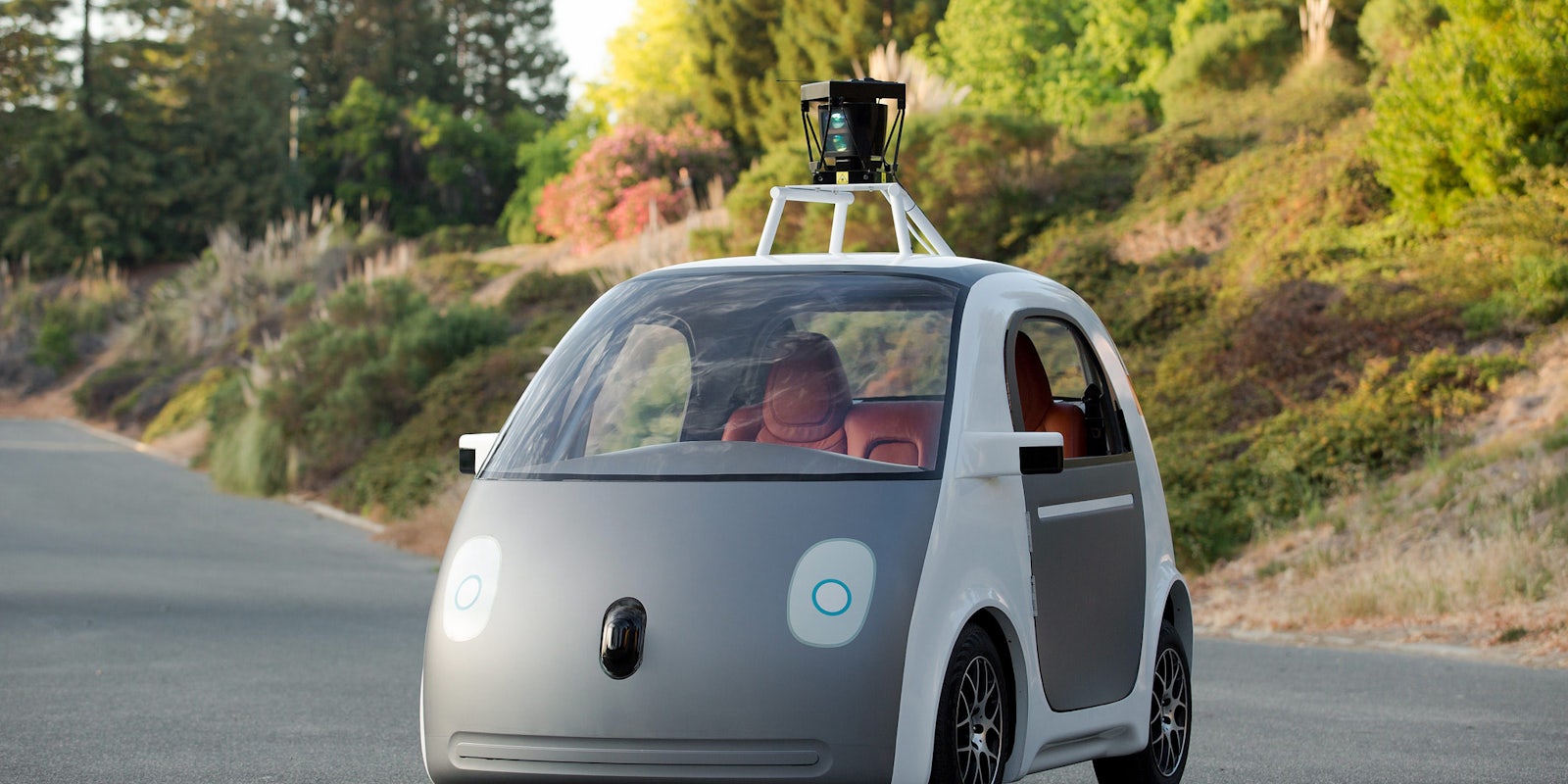In the United States, it’s not just corporations who are considered people anymore. Now artificial intelligence is people, too, thanks to a ruling issued by the National Highway Traffic Safety Agency (NHTSA).
According to a letter posted by the NHTSA’s chief counsel Paul A. Hemmersbaugh, the self-driving systems that make autonomous vehicles possible will be considered the driver for the purposes of Federal Motor Vehicle Safety Standards (FMVSS). Essentially, the computer controlling the car is considered equivalent to what would otherwise be a person behind the wheel.
The letter came in response to a query from Chris Urmson, the director of Google’s self-driving car project. Urmson asked for an interpretation of a number of federal safety provisions as they may apply to Google’s autonomous vehicles. Urmson suggested the standards may not apply at all, or could apply under the assumption the computer controlling the car could be considered the driver.
Hemmersbaugh and the NHTSA chose the latter.
Bryant Walker Smith, chair of the Emerging Technology Law Committee of the Transportation Research Board of the National Academies of Sciences, Engineering, and Medicine, called the NHTSA’s decision to consider computers to be drivers “a striking declaration.”
“This doesn’t mean that computer drivers have rights or responsibilities or are otherwise equivalent to people in law broadly,” Smith noted, and called the decision “a mixed bag” for Google, because it makes complying with some safety standards more difficult.
“NHTSA is being both bold (by classifying a computer as a driver!) and cautious (by repeatedly hinting to Google in the footnotes that perhaps it shouldn’t fully dispense with some human role),” Smith said.
In Hemmersbaugh’s letter, he goes into detail on the potential obstacles when it comes to compliance under the assumption the computer is a driver. Rear-view mirrors, for example, would be made obsolete by the self-driving system, but are still required under FMVSS. A new set of testing would have to be developed to ensure Google’s sensor system is just as capable of meeting the requirements of a conventional vehicle with a rear-view mirror.
“The exceptions process is long, difficult, and limited. The regular rulemaking process is even more onerous,” Smith said. “This could be a long process for Google to be able to self-certify its vehicles, should it conclude that is necessary.”
Even with the murkiness surrounding some of the regulations, the NHTSA’s decision appears to be a step forward for Google—or, at the very least, an avoided step backward.
The company will still face obstacles at the state and local level as it attempts to get autonomous vehicles on the road, but the Obama administration’s recent commitment to help in the development of self-driving cars may aid in those legal battles. This year, the administration plans to have the NHTSA work with automakers and state governments to create model laws and regulations for states to implement.
“Where technology meets law, the devil is in the details. And the federal motor vehicle safety standards are full of highly technical, and arguably anachronistic, details,” Smith said. That will have to change, with laws reshaped to reflect the shift in technology.
H/T CNet | Photo via smoothgroover22/Flickr (CC BY SA 2.0)
